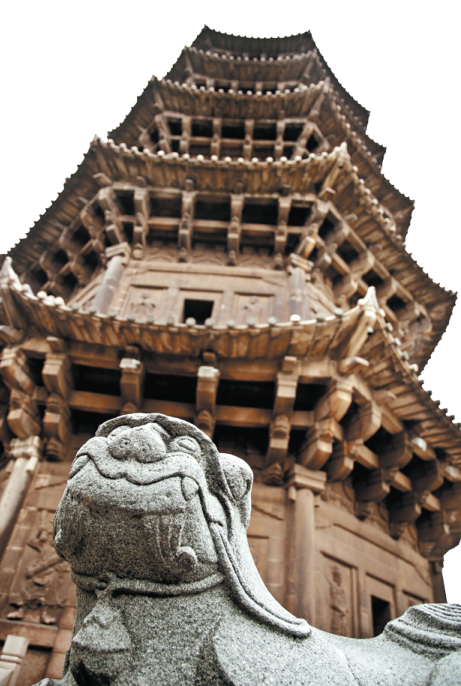Elements of success-earth, fire and water
 0 Comment(s)
0 Comment(s) Print
Print E-mail China Daily, July 29, 2021
E-mail China Daily, July 29, 2021

Being inscribed on the World Heritage List doesn't mean that study of the sites and its artifacts will halt. Zheng says follow-up excavations will continue in the area so that historians can form a continuous timeline in the lineage of Dehua's ceramic production.
"What was taken abroad goes far beyond just the products," he adds. "The technology of Dehua also benefited the rest of world in cultural exchanges. For instance, kiln technology from here was introduced to Japan via the trade route, resulting in a booming ceramics industry there."
According to Li, 29 Dehua Kiln sites have been found all over the county, and about 70 ceramic kilns from the Song and Yuan period were discovered in Quanzhou as a whole.
Other than the Dehua Kilns, the site of Cizao Kilns, located in the southwest of Quanzhou, is now included in the World Heritage List. Cizao products were also found in large amounts aboard Nanhai One.
Li says Cizao products are less refined than their Dehua counterparts and were therefore mainly exported for ordinary people's daily use, adding that the two types of ceramics fed the demand of consumers from different social classes.
"Artisans working at both places were apt to learn from others," he says. "They mimicked famous products from around the country, while mixing their own style, and continuously honing their skills, expanding their production capacity and strengthening management. They were sensitive to market demands and thus adapted well to maritime trade, making full use of the local resources.
"Dehua and Cizao complemented each other and jointly supported Quanzhou's role as an emporium of the world in Song-Yuan China."
The industry remains dynamic. Over 3,000 porcelain-making factories and studios in the county continue to make Dehua pottery, becoming one of most important hubs for ceramics production in China, especially for export.
In the temple on the Qudougong site, like their ancestors, people still pay homage to master Lin Bing. Nevertheless, what is displayed on the altar are more than just white glaze pottery. There are also colorful ceramics, decorated with shapes of animated figures from all over the world. Before they set off on their long voyages to become Halloween or Christmas gifts on the other side of the planet, maybe it is still worthwhile to pray for a safe journey.
Cast-iron evidence
Unlike porcelain, which is widely seen as a staple of ancient China's maritime trade, discovery of over 130 metric tonnes of iron from Nanhai One probably surprised the general public. However, for professional researchers like Shen Ruiwen, an archaeology professor at Peking University, it was not surprising at all-it just provides evidence of the prosperous iron trade, as recorded in historical documents.
For example, in Brief Introduction to Foreign Islands, a book compiled by a Yuan Dynasty navigator in 1349, iron made in China, including "ironware", "iron pots", "iron bars" and "iron lumps", among other forms of the black metal, were exported to 48 countries and regions aboard merchant ships setting off from Quanzhou.
"Iron was a key commodity in China's export along the maritime Silk Road during the Song Dynasty," Shen says. "Analysis of the findings on Nanhai One indicates the iron came from Fujian, but where exactly it was produced still awaits follow-up research."
A newly excavated archaeological site in Anxi county, Quanzhou, may shed light on it, though. The Xiacaopu iron production site in Qingyang village, also part of the newly inscribed World Heritage property, has provided crucial physical material to help understand the iron and steel-making technology of the Song-Yuan period.
Since 2019, archaeological excavation led by Shen discovered six smelting furnaces, a group of ancient mining pits and a segment of an ancient trail, among other remains, within an area of 50,000 square meters.
According to Shen, it is also the only archaeological site in China that witnesses the coexistence of bloomery iron and pig iron-two major types of ancient smelting techniques.
"Qingyang village is where one of the dedicated iron plants was set up by the Song government," he says. "The iron smelting industry here peaked in the 11th century."
Discovery of coins, a large amount of broken porcelain and ruins of residential buildings on the site may indicate a lasting period of prosperity in the metallurgy business here. Shen also explains that a complex transportation system via rivers also closely linked the mountainous region to the ocean.
"Together with Quanzhou's porcelain production bases, the Xiacaopu site shows the formidable capacity of basic industries in Quanzhou during the Song and Yuan periods," he says. "It also demonstrates the positive effects of maritime trade on economic development in Quanzhou's hinterland at that time."
To this day, iron smelting in Anxi continues unabated. A form of handicraft that mixes rattan and iron, known as tengtie, is one of the county's pillar goods for export. The ancient smelting furnaces may have given way to modern steel mills, but it is perhaps how locals keep the historic memory fresh in a modern, artistic way.






Go to Forum >>0 Comment(s)